
views
X
Trustworthy Source
Centers for Disease Control and Prevention
Main public health institute for the US, run by the Dept. of Health and Human Services
Go to source
E. coli poisoning can mimic the symptoms of many other diseases, although it's important to identify the correct cause because some E. coli infections (particularly the O157:H7 strain) can be fatal if symptoms or complications are untreated.
Recognizing the Most Common Symptoms
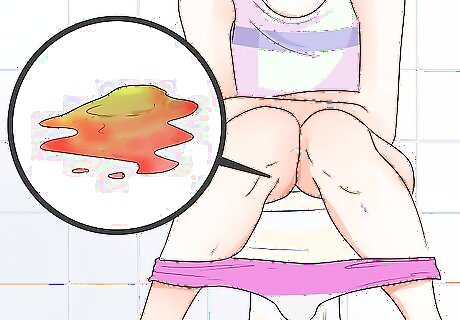
Look for bloody diarrhea. Most varieties of E. coli are completely harmless and some others cause relatively brief bouts of mild diarrhea. However, a few aggressively pathogenic strains, such as E. coli O157:H7, can cause severe gastrointestinal upset and bloody diarrhea. The most pathogenic strains of E. coli, including O157:H7, produces a powerful toxin that damages the lining of the intestines, leading to the appearance of bright red blood mixed in with the watery stool. The toxin is called Shiga toxin and bacteria that produce it are referred to as Shiga toxin-producing E. coli, or STEC for short. Another common STEC strain that's more prevalent in Europe is labelled O104:H4. Bloody diarrhea from an E. coli O157:H7 infection typically begins 3-4 days after exposure, although it may occur as soon as 24 hours or as late as 1 week. Diagnosing a serious E. coli infection is fairly straightforward and involves sending a stool sample to a laboratory for testing and culture. They will look for evidence of toxins and STEC strains. Unlike many other pathogenic bacteria, STEC strains can cause severe infections even if you ingest only relatively small numbers of them.
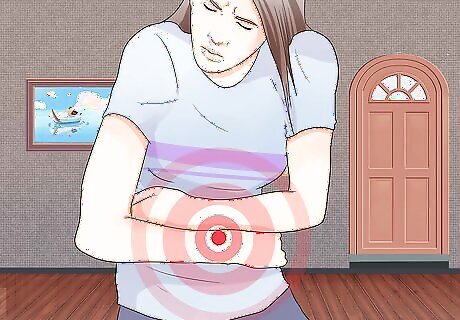
Watch for gastrointestinal pain. As the Shiga toxin irritates and ultimately causes erosion and ulceration of the lining of the large intestine, abdominal pain is often felt. The pain is usually described as severe cramping mixed with some burning pain. The discomfort can cause people to double-over and prevent them from leaving the house or even walking around within their homes. However, unlike more common causes of abdominal cramps, there is usually no associated severe bloating or distension of the abdomen with STEC infections. The sudden onset of severe abdominal cramps and pain is typically followed within 24 hours by bloody diarrhea. E. coli infection can occur in people of all ages, but it's most common in children, the elderly and those who have weakened immunity. About 265,000 STEC infections occur yearly in the U.S., with the O157:H7 strain accounting for approximately 36% of cases.
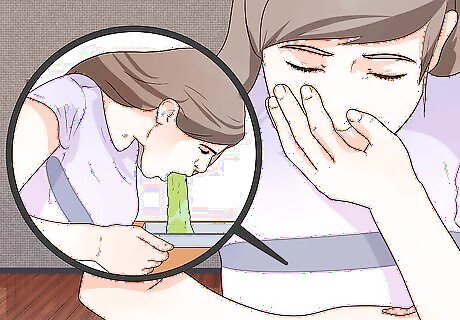
Remember that some infections trigger vomiting. In addition to severe abdominal cramping and bloody diarrhea, some people with E. coli infections also experience nausea and vomiting. Although the cause is not always clear, it appears that the Shiga toxin is not directly responsible for nausea and vomiting, but rather the intense pain caused by the invasive bacteria that burrow into the lining of the intestines. The pain triggers the release of adrenaline and other hormones, which leads to nausea and vomiting. As such, keep very well hydrated while combating an E. coli infection, but avoid fatty or greasy foods that may trigger nausea. Other minor symptoms sometimes associated with E. coli infections include mild fever (less than 101˚F) and fatigue. The most common source of an E. coli infection is contaminated food, such as contaminated ground beef, unpasteurized milk and unwashed vegetables.

Be aware of serious kidney complications. Unlike other E. coli pathogens that remain on the membranes of intestines, STEC strains are invasive. After proliferating rapidly, they tightly bind to the intestinal lining and breach it, which allows for absorption of the toxins through the bowel wall. Once in circulation, the Shiga toxin attaches to white blood cells and is carried to the kidneys where it can cause acute inflammation and organ failure — referred to as hemolytic uremic syndrome or HUS. Symptoms suggestive of HUS include bloody urine and decreased urination, very pale skin tone, unexplained bruising, confusion and irritability, and swelling or puffiness throughout the body. Most people with HUS need to be hospitalized until their kidneys recover. While most people recover from HUS, a small amount of people may have permanent kidney damage or die from it. STEC infection is recognized as the most common cause of acute kidney failure in infants and young children. In addition, your doctor may order a CBC and tests of your kidneys if you have any signs of HUS.
Identifying Conditions That Cause Similar Symptoms
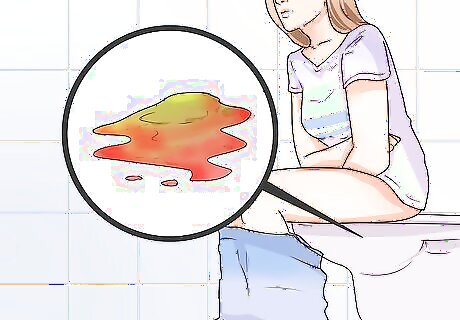
Learn about other causes of bloody diarrhea. There are many other causes of bloody diarrhea, most of which are far less life threatening than a severe STEC infection. Several other bacteria can cause bloody diarrhea, such as salmonella and shigella. Other conditions that can lead to blood in the stool include: anal fissure, hemorrhoids, broken blood vessel from aggressive wiping, diverticulitis, ulcerative colitis, stomach ulcer, parasitic infection, colorectal cancer, taking blood thinners such as warfarin, and chronic alcoholism. However, E. coli infections come on suddenly and the diarrhea containing bright red blood is preceded (by about 24 hours) by severe abdominal cramping. Bright red blood in the stool is indicative of a problem in the lower digestive tract (such as the large intestine). In contrast, blood coming from the stomach or small intestine tends to make the stool appear black and tarry in appearance. The most similar condition to a STEC infection is likely ulcerative colitis (a type of inflammatory bowel disease), but that can be diagnosed by viewing the bowels through a small endoscope.
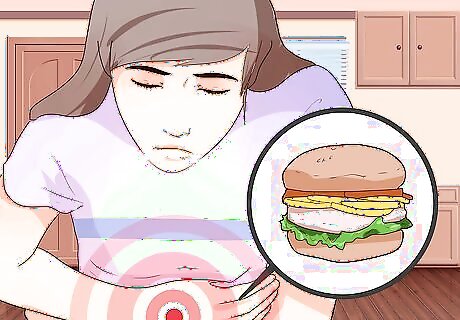
Learn about other causes of severe cramping. Most causes of abdominal cramps and/or stomach pain are benign and are not a cause for concern, despite the discomfort. For example, less serious causes include indigestion, constipation, lactose intolerance, food allergies, irritable bowel syndrome, stomach flu, kidney stones and menstruation. More serious causes of cramping and/or bloating include: appendicitis, abdominal aortic aneurysm, bowel obstruction, stomach or colon cancer, gallbladder inflammation, diverticulitis, Crohn's disease, ulcerative colitis, pancreatitis and peptic (stomach) ulcers. Of these conditions, only colon cancer diverticulitis and ulcerative colitis can truly mimic a STEC infection due to bloody diarrhea, but E. coli infections occur suddenly with no prior symptoms. Foods that represent high risk for E. coli poisoning include undercooked (pink) hamburger, soft cheeses made from raw milk, unpasteurized milk and unpasteurized apple juice or cider. Although it's not clear why, most E. coli infections in the U.S. occur between the months of June and September. So it seems to be more of a summertime problem.

Be aware of medications that increase your risk. Although no medication causes E. coli infection, many create certain conditions that make it much more difficult for your body to combat the pathogenic bacteria — which you're exposed to probably more often than you think. For example, people undergoing chemotherapy, or taking drugs to prevent the rejection of an organ transplant or using antiviral medications long-term (to prevent AIDS or liver failure from hepatitis) are at higher risk of E. coli and many other infections because of weakened immune systems. In addition, people who take drugs to reduce stomach acid production are also at increased risk of E. coli infection because hydrochloric acid offers some protection against the bacteria. Avoid taking anti-diarrheal medication during an E. coli infection because it will slow your digestive system down and prevent your body from getting rid of the toxins. Avoid taking salicylates, such as aspirin and ibuprofen, because they can increase bleeding from the intestines.













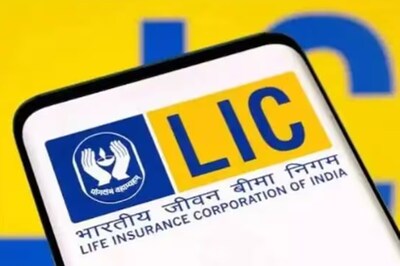


Comments
0 comment